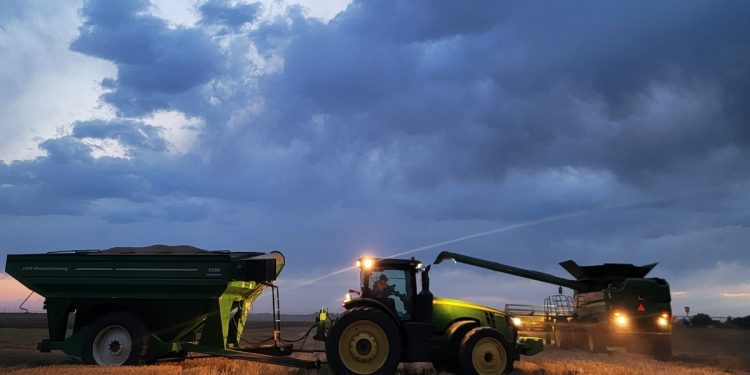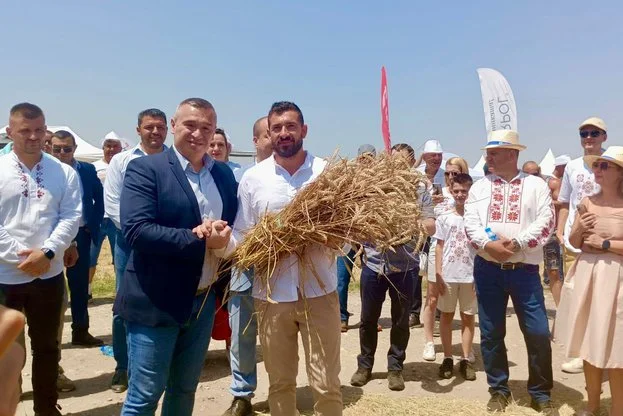Insights into recent market movements and the outlook for wheat crops in Texas, Oklahoma, and beyond
The combination of a recent market rally and prospects of a good wheat crop in Texas and Oklahoma should offer a bit of harvest optimism.
Mark Welch, Texas A&M AgriLife Extension marketing specialist, College Station, says although markets have backed off in recent days opportunities are still “a buck better than we thought they would be in April.”
He says a rally lost some steam and as much as $1 off its high. “But we’re still at $6.50. We were looking at a price with a 4 in front of it, so we have had some opportunities and are in much better shape than we were.”
It’s unusual for markets to rally this close to harvest. And that market coincides with what looks to be a good crop.
“The wheat yield spokespersons I’ve talked to are talking about how good the wheat is,” Welch says. He voices some concern of wheat up the I-35 corridor to Temple and Hillsboro and up near Dallas because of so much rain and hail. “A lot of wheat could have been knocked down. I have not heard of quality issues, and farmers can still get that wheat, even if it’s laid down, but quality is a concern.
“But the general feeling is that the Texas wheat crop is in really good shape. Oklahoma wheat conditions are better than our rating. For Kansas, the jury is still out. The USDA estimate puts the Kansas yield at 38 bushels. That’s a pretty big setback, but after the Kansas wheat tour, estimates put yield at 46.5 bushels.”
Surprising crop
“Wheat is that way. A lot of the time we do not know until the combine runs. A low spot, a high spot, or freeze damage can be variable across the area. At this point, the market tells us this is a good crop.”
Welch says the recent market rally was spurred mainly by concerns about the Kansas crop and uncertainty about Russia’s production.
“Southern Russia got dry and cold at critical point in the reproduction cycle when wheat is susceptible to frost and freeze injury. How bad did it hurt Russia’s crop? It’s a waiting game until they run the combines.”
Muddled market
Russia’s status muddles the global market picture,” Welch says. “Will a Russian production cut be compensated by a good crop in the U.S.? India has good crop. Australia’s crop is likely better than we thought it was going to be. Europe has been too wet; it’s been too dry. How that pans out could mean we have enough adjustments to the top side to compensate for any downward revisions on the Russian crop.”
Welch says that although the U.S. produces only 6% of the world’s wheat, we are still a major exporter.
“Reports from USDA and other sources are important for U.S. wheat producers. The market was back down over the last week or so, down 20 cents for July to $6.45, a dollar better than month ago but off a dollar from the rally. The market is not as bad as we thought it could be.”
He said the U.S. winter wheat crop appears to be a good one. “And conditions for spring wheat look fantastic early.
“The U.S. wheat outlook is more positive than the global outlook, which has areas of concern but better crops in other locations can compensate.”
In June, July, and August the scenario will unfold.
Welch says the harvesttime rally “was a gift. We have better market opportunities now than we did a few weeks ago. We’ve seen a little setback but rallies later could be driven by how serious the Russian situation is and how well other producers globally do. We usually get a February rally and fall off at harvest following a May rally. If we reverse from that, it will be because global conditions in the market are worse than we thought.”
Optimism for Texas
Texas remains on the upswing. “The drought map shows a better picture than it has over the last few years. We’re seeing a nice U.S. wheat production rebound.”
Welch cautions farmers to watch export reports. “We have a lot of competition, but look at how wheat moves out of the Gulf and down into Mexico. That will help cash wheat prices for Texas growers.
“The wheat stocks report shows wheat is not backed up. It is important to see wheat keep moving.”
Take a look at this gallery to view photos from this year’s Texas and Oklahoma wheat harvest.
Error




